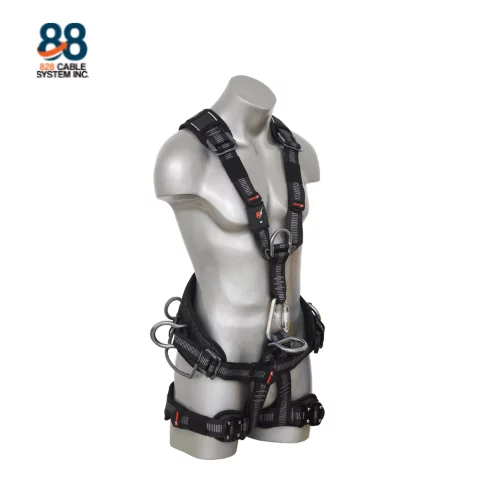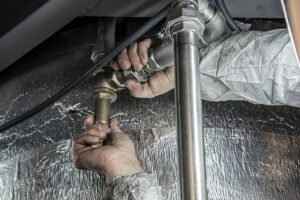In industries where working at heights is a common occurrence, ensuring safety is paramount. One crucial piece of equipment designed to protect workers from fall-related injuries is the full-body harness. In this guide, we’ll explore what a full-body harness is, its benefits, safety standards, and essential maintenance practices to keep it in top condition.
What is Full-Body Harness?
A full-body harness is a specialized safety device designed to secure a person in an upright position after a fall. Unlike other fall protection gear, such as body belts, which were banned in 1998 due to safety concerns, full-body harnesses are constructed to distribute the force of a fall over a wider area of the body. This design minimizes the risk of suspension-related injuries and provides better overall protection.
The Evolution of Fall Protection Devices
Fall protection technology has evolved significantly over the years. Body belts, which were commonly used before 1998, were found to contribute to internal injuries and were subsequently banned. Today, full-body harnesses are the standard for fall protection due to their superior design and safety features. This evolution highlights the importance of adhering to modern safety practices and regulations.
Key Features and Benefits of Full-Body Harnesses
Full-body harnesses are designed with various features that enhance safety and comfort. Key features include adjustable straps for a customized fit, padding for comfort during prolonged use, and robust materials that ensure durability. The primary benefit of a full-body harness is its ability to distribute the fall impact across the body, reducing the risk of injury. Additionally, harnesses are designed to prevent suspension trauma, a serious condition that can occur if a person is left hanging in the harness for too long.
Safety Standards and Regulations
To ensure the effectiveness of fall protection equipment, strict safety standards and regulations are in place. A fall arrest device must be installed if an individual is working at heights greater than 6 feet. The device should provide for a deceleration distance of at least 3.5 feet and prevent a free fall of more than 6 feet. Additionally, the maximum arresting force exerted on the harness should not exceed 1,800 pounds, and the system’s load capacity should be at least double that needed to arrest a fall. Adhering to these standards is crucial for ensuring worker safety.
Choosing the Right Full-Body Harness
Selecting the right full-body harness involves several considerations. Factors such as the type of work, the environment, and personal comfort should all be taken into account. There are various types of harnesses available, including those with different configurations for specific tasks. For example, some harnesses are designed for climbing, while others are suited for confined spaces. Ensuring a proper fit is also essential for maximizing safety and comfort.
Proper Use and Maintenance of Full-Body Harnesses
Correct use and maintenance are critical for the effectiveness of a full-body harness. To wear a harness properly, make sure all straps are adjusted to fit snugly without being too tight. Regular inspections are necessary to check for signs of wear and tear, such as frayed straps or damaged buckles. After a fall, a harness must be inspected by a qualified expert before it can be used again. Regular maintenance and prompt repairs or replacements of damaged parts are vital to ensure ongoing safety.
Common Mistakes and How to Avoid Them
Several common mistakes can compromise the effectiveness of a full-body harness. These include improper use, such as incorrect adjustments or not wearing the harness correctly, and neglecting regular maintenance. Overlooking these aspects can lead to increased risk of injury or equipment failure. To avoid these issues, always follow manufacturer guidelines, conduct routine checks, and ensure that any harness used for fall protection is in good working condition.
Takeaway
Full-body harnesses are an essential component of fall protection systems, providing critical safety features and benefits for workers at heights. By understanding the importance of proper use, maintenance, and compliance with safety standards, you can ensure that these devices offer the maximum level of protection. Prioritize safety by choosing the right harness, performing regular inspections, and addressing any issues promptly.




